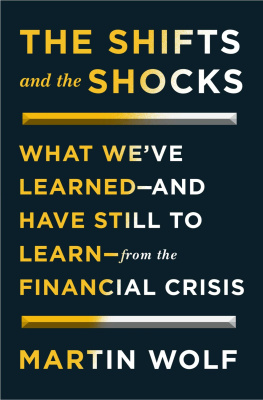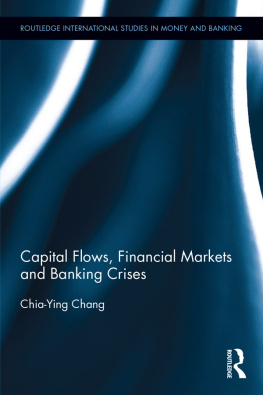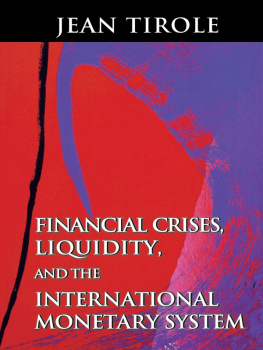Neil Shenai
Mexico City, Mexico
ISBN 978-3-319-91345-2 e-ISBN 978-3-319-91346-9
https://doi.org/10.1007/978-3-319-91346-9
Library of Congress Control Number: 2018949043
The Editor(s) (if applicable) and The Author(s) 2018
This work is subject to copyright. All rights are solely and exclusively licensed by the Publisher, whether the whole or part of the material is concerned, specifically the rights of translation, reprinting, reuse of illustrations, recitation, broadcasting, reproduction on microfilms or in any other physical way, and transmission or information storage and retrieval, electronic adaptation, computer software, or by similar or dissimilar methodology now known or hereafter developed.
The use of general descriptive names, registered names, trademarks, service marks, etc. in this publication does not imply, even in the absence of a specific statement, that such names are exempt from the relevant protective laws and regulations and therefore free for general use.
The publisher, the authors and the editors are safe to assume that the advice and information in this book are believed to be true and accurate at the date of publication. Neither the publisher nor the authors or the editors give a warranty, express or implied, with respect to the material contained herein or for any errors or omissions that may have been made. The publisher remains neutral with regard to jurisdictional claims in published maps and institutional affiliations.
Cover illustration: kaarsten, iStock/Getty Images Plus
Cover design by Akihiro Nakayama
This Palgrave Macmillan imprint is published by the registered company Springer Nature Switzerland AG
The registered company address is: Gewerbestrasse 11, 6330 Cham, Switzerland
Preface
I started thinking about writing a book on financial crises a decade ago during my final semester as a Masters student at Johns Hopkins University School of Advanced International Studies (SAIS), where I returned, after a stint on Wall Street, to complete my Ph.D. At the time, political economists were trying to comprehend the origins and implications of the global financial crisis. There was a widespread acceptance that mainstream economicswith its focus on market efficiency, rational expectations, no-arbitrage pricing, and equilibriumfailed to foresee the crisis. Savvy analysts returned to the insights of Hyman Minsky, Charles Kindleberger, and other so-called Post-Keynesians to understand financial instability.
I too read Minsky and Kindleberger and soon realized that my road to a finished dissertation traveled through Post-Keynesianism. Even though Minsky and Kindleberger were broadly convincing, there were a few aspects of their theories that warranted extra attention. I was surprised to learn that the foundational texts of Post-Keynesianism omitted the epistemology of John Maynard Keynes, Minskys intellectual father, from their theories. Nevertheless, Keynesian arguments about how agents cope with uncertainty in marketsby projecting linear trends into the future, by deferring to authoritative actors, and by trying to guess the intentions of fellow investorsdescribed the markets that I witnessed as a junior fixed-income analyst on Wall Street. Social scientists such as international relations theorists and economic constructivists had a ready-made vocabulary for describing the social interdependencies that permeate complex environments. They had a lot to say about why crises occur and how governments respond to macroeconomic stress.
This book presents a modified Post-Keynesian model of financial crises that draws upon John Maynard Keynes notions of conventionality, Charles Dorans power cycle theory, and economic constructivism. This model attempts to solve several empirical puzzles of financial crises, including where financial stability comes from, why crises take markets by surprise, how defied expectations trigger financial panics, why uncertainty causes market volatility, how economic elites respond to financial instability and, crucially, why some interventions are more effective than others.
Like any good compromise, this book runs the risk of leaving disciplinary partisans dissatisfied. Social Finance does not depend on mathematical elegance to make its points (though I encourage readers interested in such arcana to peruse the books footnotes and references). Rather, I wrote Social Finance to provide a heuristic device for policymakers, students, portfolio managers, and academics to explain and forecast financial instability. Readers interested in extensions of Post-Keynesianism, the global financial crisis, and a framework for anticipating future financial crises will benefit from this book. Hopefully, this books lack of disciplinary fidelity is compensated by its accessibility and novelty.
Once I had an idea of my theory, I needed to decide how best to illustrate its applicability to crises. Choosing a case was an easy decision. The global financial crisis was the most significant shock to the global economy since the Great Depression. It demonstrated the risks posed by shadow banking, or market-based financial intermediation, which has since become one of the most important sources of credit creation in the world. There is no shortage of excellent work on shadow banking written over the last decade, including by authors and institutions such as Gary Gorton, Perry Mehrling, Zoltan Pozsar, the Bank of International Settlements, the Federal Reserve Board of Governors, the Financial Crisis Inquiry Commission, and the International Monetary Fund, from which this book borrows liberally. Social Finance contributes to this literature by grounding its analysis of shadow banking within a modified Minsky-Kindleberger framework and by incorporating first-hand accounts of financial market participants into its empirical work. To write this book, I conducted interviews with hedge fund managers, market makers, private equity investors, and regulators, who oversaw over $2 trillion in annual order flows and managed over $160 billion in assets at the time of the crisis. Readers interested in learning more about how financial market participants think during crises and the fragility of shadow banking generally will benefit from Social Finance .
I close with a note about this books cover. To state the obvious, falling dominoes are an apt metaphor for markets in crisis. The books cover should serve as a gentle reminder about the critical role that financial crisis fighters play in stopping crises. Because of the nature of their work, these men and women do not always receive the credit they deserve. Granted, society is right to question their bureaucrats and the mistakes of financierswe should not take the bailouts lying down. But things could have been much worse. Hopefully this book shows readers that the choices of central bankers, politicians, and regulators have generational implications on the economy, and that more timid choices could have led to a worse outcome for all. We should therefore take care to nurture our crisis-fighting institutions during quiet periods, knowing that when disaster strikes, our welfare often depends on the highly visible hand of government to save us from the abyss.











